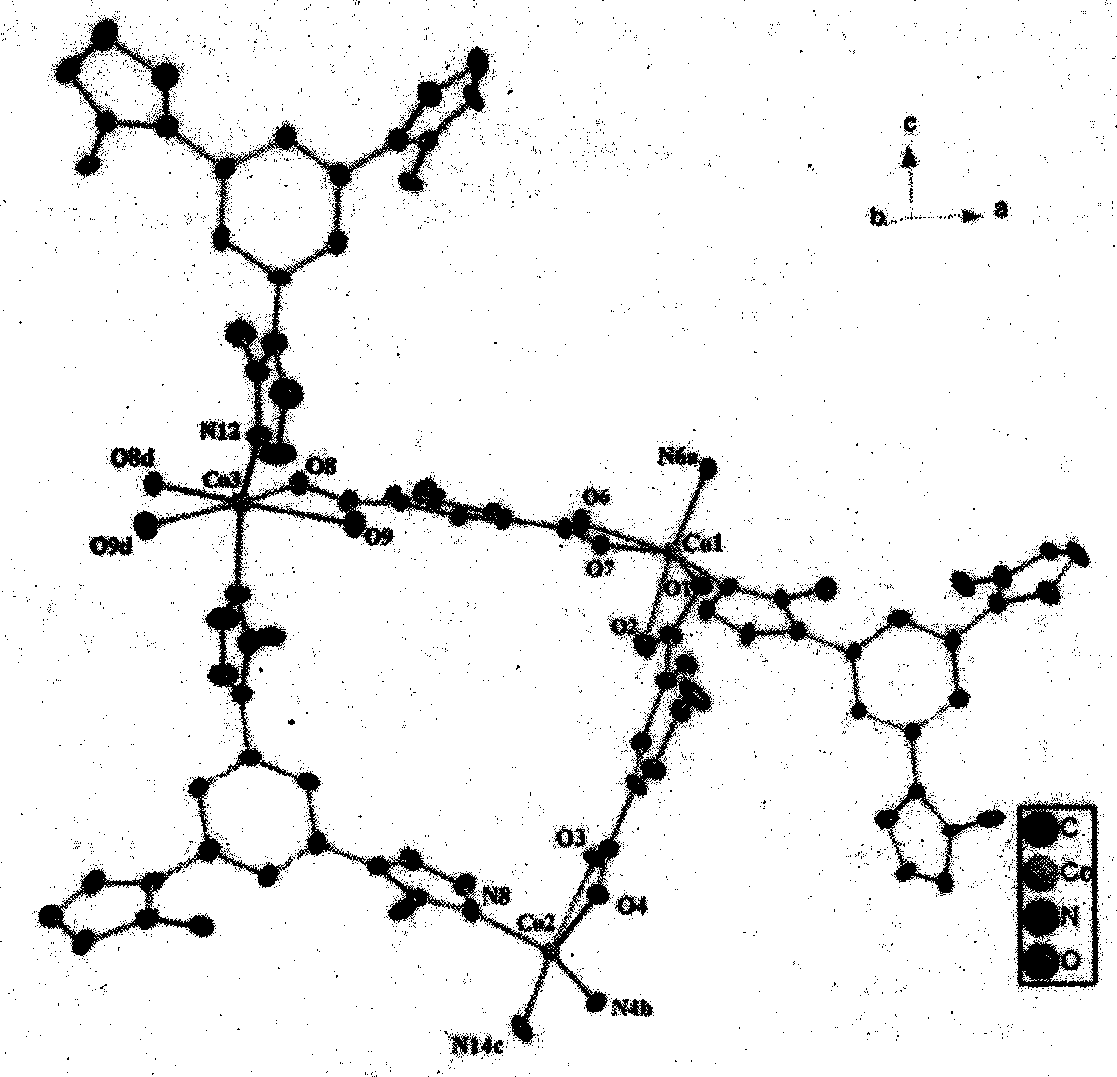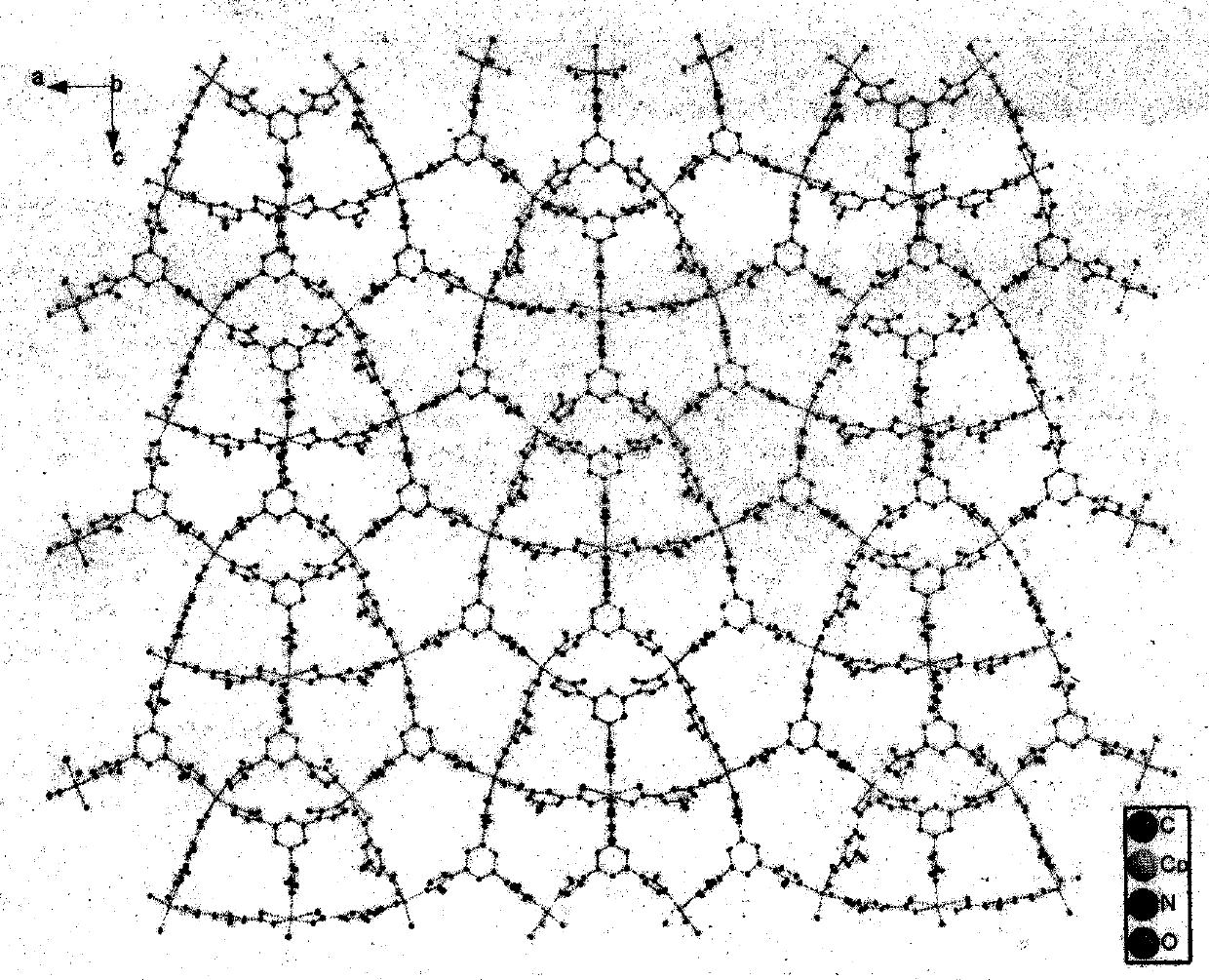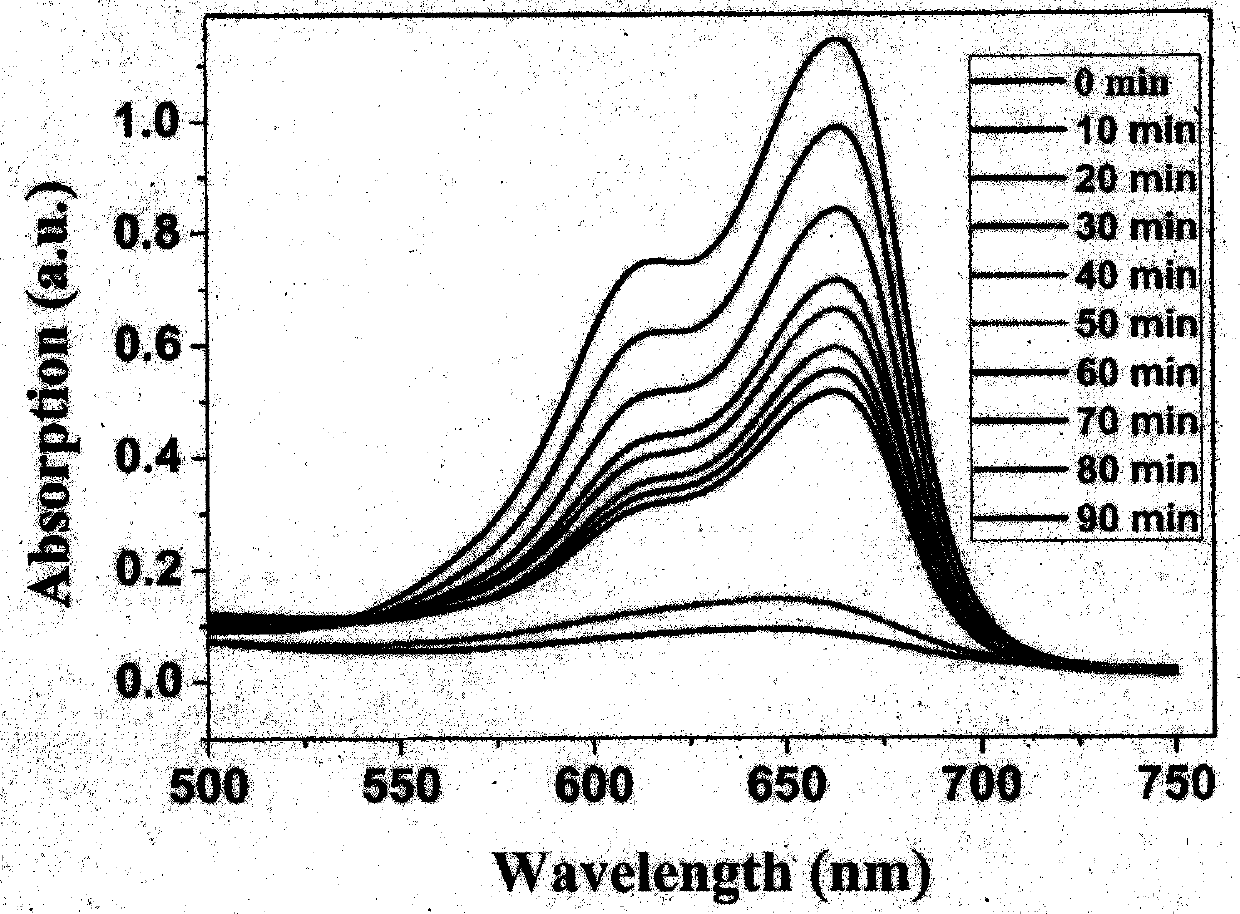Synthesis method of two-dimensional cobalt complex, and applications of two-dimensional cobalt complex as photodegradation catalyst and ferroelectric material
A technology of cobalt complexes and ferroelectric materials, applied in the direction of organic compound/hydride/coordination complex catalysts, physical/chemical process catalysts, cobalt organic compounds, etc., can solve the difficult functional design and Modification, waste, serious environmental pollution, and restrictions on research progress, etc., to achieve excellent catalytic activity and repeatability, simple process, and high yield
- Summary
- Abstract
- Description
- Claims
- Application Information
AI Technical Summary
Problems solved by technology
Method used
Image
Examples
Embodiment 1
[0026] Embodiment 1: Synthesis of ligand 1,3,5-tris(2-methyl-1-imidazolyl)benzene (TMIB)
[0027] 1,3,5-tris(2-methyl -1-imidazolyl)benzene (TMIB);
[0028]
[0029] The molar ratio of 1,3,5-tribromobenzene:2-methylimidazole:potassium carbonate:cuprous oxide is 2:8:8:1; the reaction temperature is 160°C, and the reaction time is 24h. In a polar solvent, 1,3,5-tris(2-methanol) was prepared by heating 1,3,5-tribromobenzene, 2-methylimidazole, potassium carbonate and cuprous oxide in a one-pot method -1-imidazolyl)benzene (TMIB).
Embodiment 2
[0030] Embodiment 2: the synthesis of complex
[0031] 14.6mg of Co(NO 3 ) 2 ·6H 2O, 15.9 mg of TMIB, 9.1 mg of OH-H 2 BDC was dissolved in a mixed solution of 4 mL of water and 6 mL of DMA, ultrasonically oscillated for 5 min, transferred to a polytetrafluoroethylene liner of a 25 mL hydrothermal reactor, and reacted at 100°C for 72 hours, and the resulting product was washed three times with DMA (2 mL / time), to obtain purple transparent bar block crystals. Based on Co(NO 3 ) 2 ·6H 2 The calculated yield of O was as high as 63.6%.
Embodiment 3
[0032] Embodiment 3: Structural characterization of complexes
[0033] Use a microscope to select a single crystal of a suitable size, and use a Siemens (Bruker) SMART CCD diffractometer (graphite monochromator, Mo-Ka, ) to collect diffraction data. Diffraction data were corrected for absorption using the SADABS program. Data restoration and structure elucidation were done using the SAINT and SHELXTL programs, respectively. The coordinates of all non-hydrogen atoms were determined by the least squares method, and the positions of the hydrogen atoms were obtained by the theoretical hydrogenation method. The crystal structure was refined using the least squares method. Figure 1(a) and Figure 1(b) show the basic coordination and stacking modes. Some parameters of its crystallographic diffraction point data collection and structure refinement are shown in the table below.
[0034] Crystallographic data of the complexes in Table 1
[0035]
[0036] R 1 =∑||F o |-|F c |...
PUM
 Login to View More
Login to View More Abstract
Description
Claims
Application Information
 Login to View More
Login to View More - R&D
- Intellectual Property
- Life Sciences
- Materials
- Tech Scout
- Unparalleled Data Quality
- Higher Quality Content
- 60% Fewer Hallucinations
Browse by: Latest US Patents, China's latest patents, Technical Efficacy Thesaurus, Application Domain, Technology Topic, Popular Technical Reports.
© 2025 PatSnap. All rights reserved.Legal|Privacy policy|Modern Slavery Act Transparency Statement|Sitemap|About US| Contact US: help@patsnap.com



